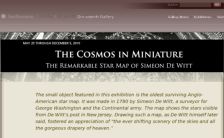Browse Resources
(26 classifications) (113 resources)
| Bibliography
(2)
Calendars (1) Charts, diagrams, etc. (4) Computer games (1) Computer network resources (12) Computer-assisted instruction (2) Databases (6) Environmental aspects (1) Exhibitions (3) Handbooks, manuals, etc. (4) History (9) Information services (8) Maps (4) |
Observations
(56)
Periodicals (9) Photographs (2) Pictorial works (24) Research (40) Societies, etc. (11) Study and teaching (69) Study and teaching (Elementary) (11) Study and teaching (Higher) (11) Study and teaching (Middle school) (11) Study and teaching (Secondary) (6) Technique (4) Video catalogs (1) |
Resources | |||||||||||||||||||||||||||||||||||||||||||||||||||
|---|---|---|---|---|---|---|---|---|---|---|---|---|---|---|---|---|---|---|---|---|---|---|---|---|---|---|---|---|---|---|---|---|---|---|---|---|---|---|---|---|---|---|---|---|---|---|---|---|---|---|---|
| |||||||||||||||||||||||||||||||||||||||||||||||||||
| ← Previous | Next → | ||||||||||||||||||||||||||||||||||||||||||||||||||




